Contact
Tööstuse 43, Tallinn, Estonia
Store: +372 508 3309
Workshop: +372 5301 8568
Tähesaju tee 31, Tallinn Estonia
Store: +372 5885 7752
Workshop: +372 5301 6938
Info: +372 508 3309
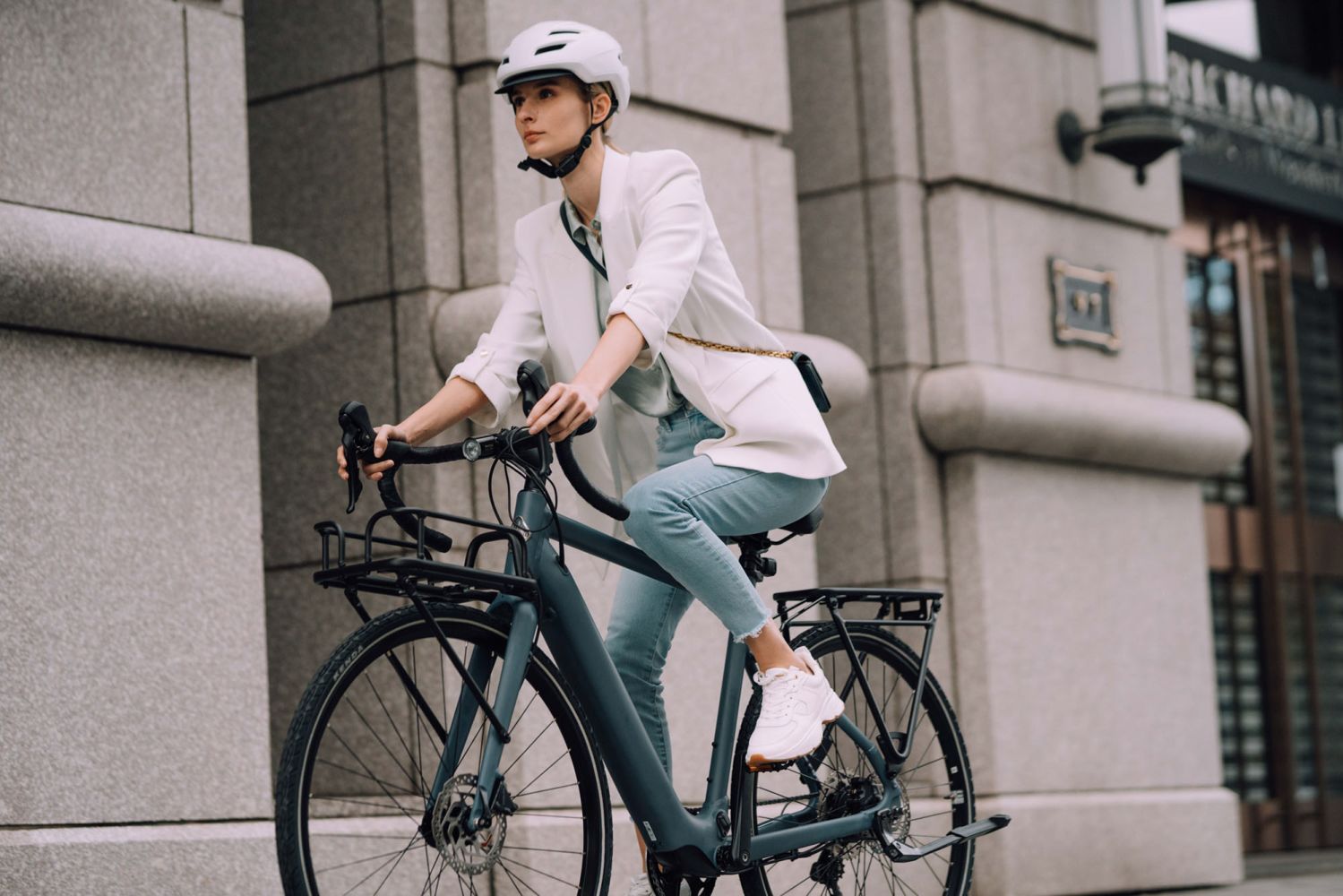
Electric bicycles have become more and more common over the last few years and seem to be bringing two-wheelers closer to the people. Many people associate cycling with sport, rather than with a leisurely daily commute, where the bicycle is primarily a means of transport. The electric bike takes the sporty out of cycling and gives courage to try for those whose health or general physical condition does not allow for much exercise at a time. The distance that can be covered in a single charge is also quite long on wheels. Electric bikes are attracting more and more people to get some fresh air without moving a muscle, which is good for the body and even more for the mind.
There are almost as many different types of electric bikes as there are conventional bikes – hybrid bikes, mountain bikes, urban bikes, folding bikes, cargo bikes, etc. There’s no one perfect bike for every situation, but there’s bound to be a perfect two-wheeler for everyone.
How to choose the right electric bike? Exactly the same as a normal bicycle. You need to think about the kind of trips you need a bike for. Is it for hiking, daily commuting, carrying a lot of stuff, etc.? However, other important features of electric bicycles include:
ELECTRIC BICYCLE COMPONENTS
Suspension – Electric bikes usually have a front suspension. There are also variants with rear shocks for mountain bikes, as they are designed for riding on really hilly terrain. If you want an even softer ride, wider tyres, a softer saddle with suspension and a seat post with a shock absorber will help.
Gears are also available on most electric bikes – usually 7 to 12. The hub gears need to be cleaned and oiled regularly, but this is fairly easy. Do not change gears too much at a time – from the smallest to the largest in a single shift. Changing gear while driving is also not recommended. The internal hub gearshift does not require constant maintenance as it is protected from the elements and dirt. Several gears can be shifted at the same time, even when the wheel is not moving. Very handy for city driving, where there are a lot of stops and starts. There is also a choice of belt-driven wheels among the hub-geared wheels. The bike is heavier and more expensive, plus you can’t fix it yourself if it breaks (which is very rare).
Brakes – Hydraulic disc brakes are used from mid-range onwards on electric bikes (higher braking power), while mechanical disc brakes are used on simpler bikes (easier to repair and replace).
There are two types of engines – the rear-wheel hub engine (hub motor), or the mid-drive engine (mid-drive). The centrally-mounted wheels are better optimised for better weight distribution as well as distance travel.
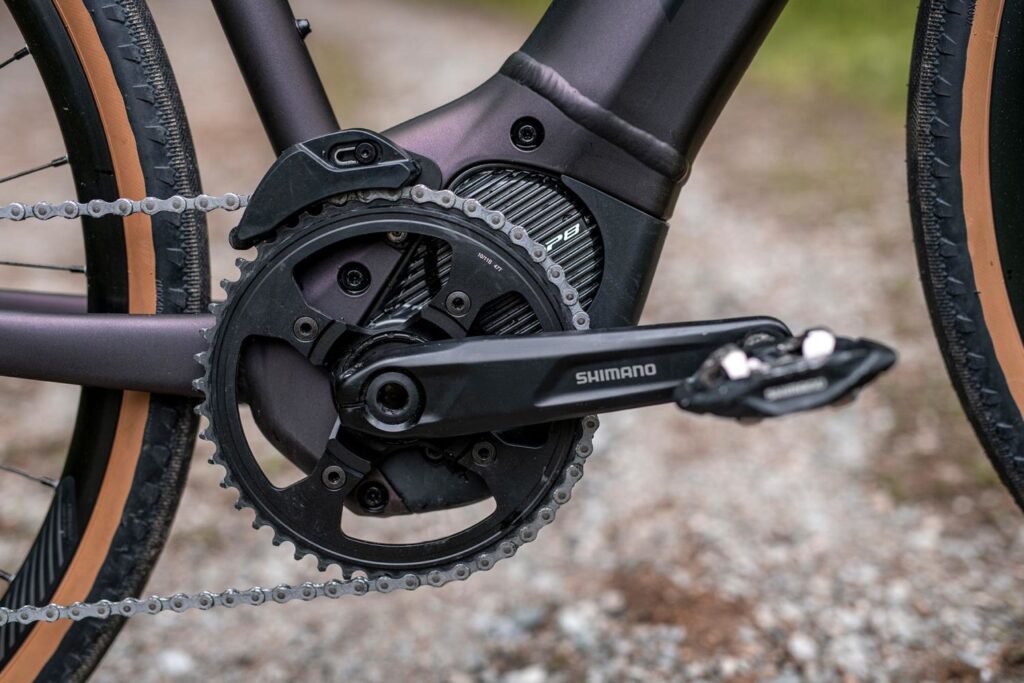
The engine power is indicated in Newton metres:
Batteries – Most electric bikes have an external battery that can be easily removed, for example for charging in the room. Many have it hidden inside the frame, so you can’t tell it’s an electric bike. Most of the electronics in electric tricycles are weatherproof, not waterproof. This means avoiding heavy downpours and driving in deep water.
Screen – Electric bikes are generally equipped with a clear, easy-to-use screen and adjacent buttons to navigate the menu. From there you can change the assistance level, monitor speed, distance, battery level, etc. There are also some where you can charge your phone via USB or connect to another app via Bluetooth.
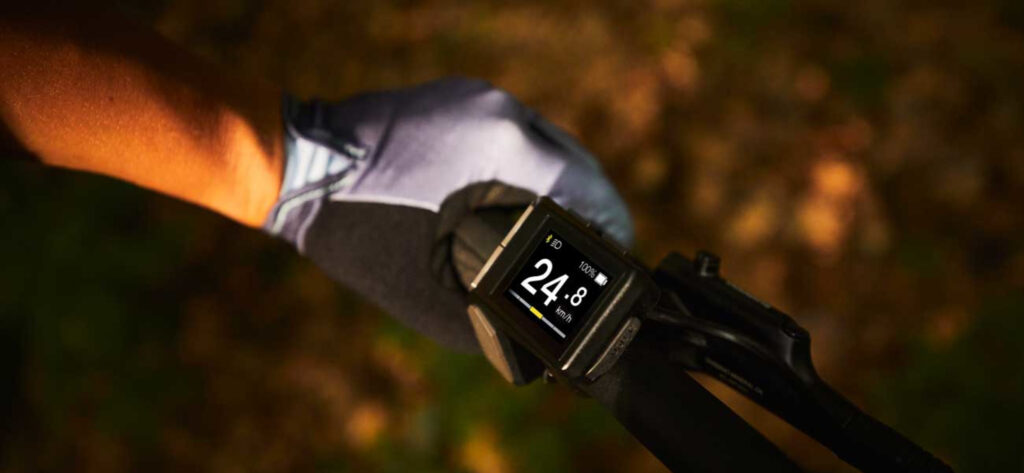
TIPS FOR THE BEGINNER
Before you start choosing and buying a bike, you should put a few tips behind your ears for your first ride, because although an electric bike looks exactly the same as a two-wheeler powered by a bone stock motor, they do have some very important differences in the way they behave and therefore handle.
1. Start calmly and slowly. There may be an appetite to get up to full speed straight away, but for now we recommend starting steady at low power. There should also be more space around you in case the speed suddenly gets too much – you may not react immediately or be able to stop as quickly as you used to with a cargo bike. You have to get the feel of the wheel right.
2. Brake sooner. More power, more speed and a heavier frame means that the braking distance is longer and stopping is not as easy and quick as with a conventional bike.
3. Brake gently and smoothly. Electric bikes usually have disc brakes, which are more efficient and do not let you down in different weather conditions. Always brake flat and smoothly at first on a new bike until you get the feel of it. This prevents sudden braking, which often ends in a fall. Because the front brake is more efficient than the rear brake, the wheel may stop quickly, but the rider is still moving forward and doing a somersault over his head. It is safer to use both at the same time, or to use the front brake only at low speed.
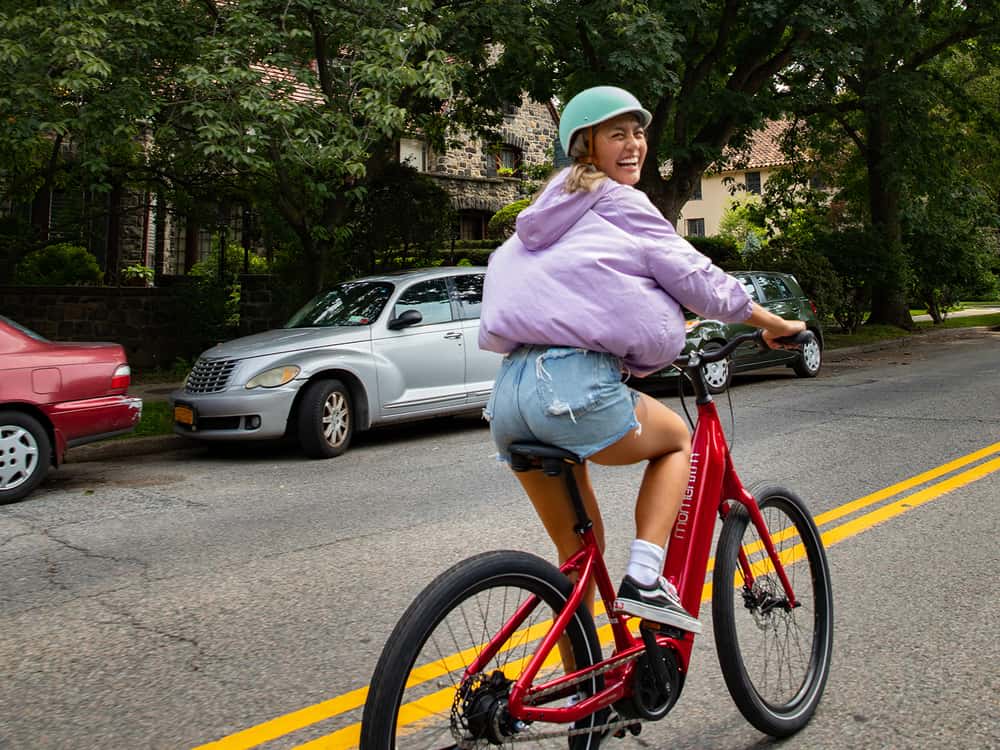
4. Be alert and careful. With an electric bicycle, you can reach higher speeds and therefore need to be more alert in traffic, as the braking distance is shorter and the injuries in a fall are more severe than in a fall with a conventional bicycle.
5. Always obey the rules of the road and good practice – understand where you are driving and choose your speed accordingly. Choose the right speed in the right place and enjoy the ride!
If the frame size is between the two, choose a smaller frame for those with shorter legs and a larger frame for those with longer legs.
The range of an e-bike depends on a lot of factors – the battery, the motor and the speed level, in other words, how much the e-bike helps you pedal. Nature also imposes its own constraints – wind, temperature, terrain. However, taking all this into account, we can drive more economically by applying a few tips:
ELECTRIC BIKE MAINTENANCE
Have the engine and battery checked once a year at a workshop. It’s worth having your bike serviced in the autumn, as there are always a lot of people waking up from hibernation in the spring, and the wheels are often very long. The battery must be removed before cleaning the bicycle, and it is essential not to wash the bicycle with a pressure washer, as the electronic parts may be damaged by water. Once the bike has been washed, be sure to dry the engine and battery. Read the user manual that comes with your bike, as it gives more detailed advice on how to use and maintain your bike.
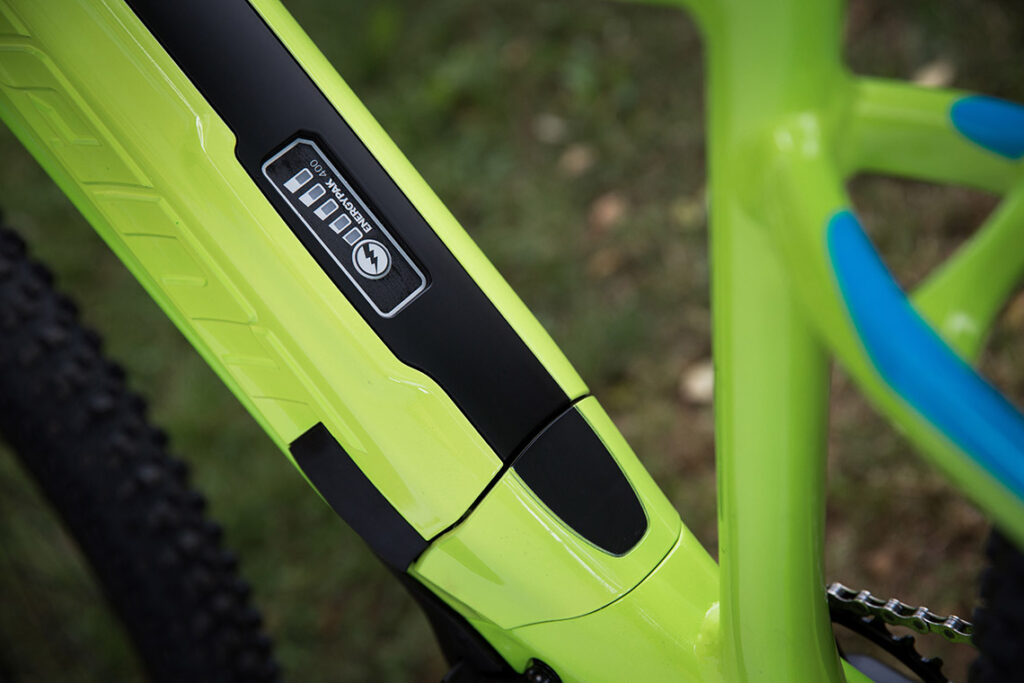
With a removable battery, you could take it with you when you park your bike for a long time – so you can charge it at work, for example. It’s a must in winter, as the battery capacity is reduced at sub-zero temperatures. So in winter or when it’s cold, take it indoors and only put it on the bike when you’re going to ride again. If possible, always charge batteries at room temperature, never in sub-zero temperatures! This way, battery life is not shortened prematurely. Avoid using an extension lead when charging. You can use battery thermal protection while driving.
If the bike is not used in winter, remove the display and battery from the bike if possible and store it in a dry place at room temperature. Battery capacity could be between 30-60%.
Use a bike cover every day to protect against the weather.
ACCESSORIES FOR ELECTRIC BICYCLE
The right helmet for the bike with a kick! Because electric bikes can travel at much higher speeds, conventional helmets are also unsuitable because they are not built to withstand collisions at such high speeds. Be sure to check that the helmet is also suitable for electric bikes. Velomarket offers the following helmets suitable for electric bikes:
Bike lights are usually already built into electric bikes and are powered by the battery. Of course, there is the possibility of adding lights if the aim is to illuminate the road more, rather than simply to make yourself visible to traffic. For a more powerful beam, Velomarket has a range of powerful lights from Giant:
Buy a proper and safe bike lock! You definitely need a proper lock with the highest security rating. It is even recommended to buy a second lock, one stronger and one weaker. In Estonia, there are also bike parking facilities where you can park your bike safely using a mobile app, for example Bikeep. If it is necessary to leave the bike out overnight, preferably in a well-lit area where there are other bikes. Velomarket offers a range of safe bicycles from AXA, a Dutch manufacturer focused on improving bicycle equipment and safety:
SELECTION OF ELECTRIC BIKES IN VELOMARKET
Electric bikes come in different types and price ranges (different qualities). Broadly speaking, prices are distributed like this:
When choosing an electric bike, be sure to think first about what you need the bike for, what its main purpose is, and then find the right bike for you in the right price range.
HYBRID BICYCLES
Hybrid bikes are very popular because they have a more comfortable upright riding position, plus they have attachment points for luggage racks, bags, bottle holders and more, allowing plenty of space to fit everything you need on the bike. Wide, thick tyres are suitable for rougher terrain, and many hybrid bikes also have a front mudguard to cushion the ride on rough roads.
Romet bikes are well suited up to 90 km of road:
For longer rides (up to 160-180 km), we offer bikes from the well-known bike manufacturer Giant:
URBAN BIKES
Urban bikes are comfortable and beautiful, and a pleasure to ride on your daily commute. Velomarket offers a wide range of electric urban bikes, such as Romet bikes with a range of ~60 km:
Giant bicycles are available with a ~150 km range:
Foldable electric bikes are also available, perfect for urban cycling. The trendy Fiido D series with a driving range of 100 km:
TRANSPORT WHEEL
Electric bikes are opening up the world to a whole new world of possibilities, and one convenient solution is a bike like the Fiido T1. Seven gears and a 750 W motor reach a top speed of 45 km/h. The package frame and front basket are strong enough to carry what you need. Comfortable, sturdy, with a wide saddle and a front mudguard!
FOLDING BICYCLE
If your daily commute often involves taking public transport, for example, an electric folding bicycle is the right choice for you. It’s easy to carry around and doesn’t take up too much space on already cramped public transport. You can also conveniently pack up your bike when you arrive at your destination and take it indoors, where it’s safer to store it.
Velomarket has a wide range of Fiido and ADO electric bikes with a 60-80 km range:
With a range of 100 km, Fiido folding electric bikes are perfect for off-road use:
MOUNTAIN BIKES
For many daily riders, off-road bikes would not be suitable, as they are designed for muddy terrain rather than urban streets, even if the asphalt surfaces are uneven and pavement strewn. However, not everyone lives in a city. Estonia has a very varied terrain and soil, which makes a mountain bike the right choice. Electric mountain bikes tend to be a little more expensive, but they are also more durable. It is also possible to put various accessories on them. The Fiido M21 foldable mountain bike has been tested on a hike around Lake Võrtsjärv, and you can read more about it from a blogpost here.
It’s good to see that electric bikes are becoming more and more common and attracting more people outdoors to get some fresh air, do their daily chores or just enjoy a nice day out. The choice of electric bikes has increased and everyone is sure to find their favourite. However, if you can’t find one at the moment, you certainly don’t have long to wait, as the development of electric bikes is only just getting off the ground. The Velomarket team wishes you a happy and safe ride and looks forward to your annual maintenance. We always help!